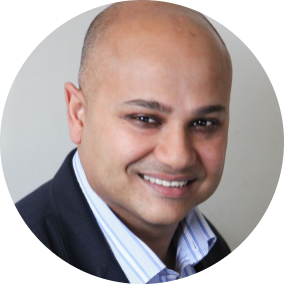Smart Goal Setting: Easy Tips that Actually Work
 Feel like you set big goals but struggle to achieve them?
Feel like you set big goals but struggle to achieve them?
Don't miss this podcast on the SMART goal-setting system.
Ash Roy explains how to make goals Specific, Measurable, Achievable, Relevant, and Time-bound.
Using personal experiences from getting an MBA to building a business, he shows how SMART goals turn dreams into realities.
Learn to set clear goals, track progress, and align targets with objectives for success.
Whether you're an entrepreneur, professional, or student, this podcast offers a roadmap for effective goal setting.
Tune in to turn aspirations into achievements!
Links Mentioned:
productiveinsights.com/membership Productive Insights Membership
productiveinsights.com/175 conversation with James Clear
productiveinsights.com/207 conversation with Brian Tracy
Timestamp:
00:00 Introduction to SMART Goal Setting
01:20 SPECIFIC: The Power of Specific Goals
02:46 MEASURABLE: Harnessing Measurability for Success
03:53 ACHIEVABLE: Achievability: Setting Realistic Goals
04:44 RELEVANT: Aligning Goals with Business Objectives
05:36 TIME BOUND: The Importance of Time-Bound Goals
07:05 Beyond SMART Goals: Systems for Success
07:44 Closing Thoughts and Resources
Transcript:
SMART goal setting is more than just a buzzword. It's a transformative strategy that can turn your aspirations into achievements. In this video, I'm going to talk about exactly how you can use the SMART goal setting system to turn your dreams into a reality. SMART is an acronym for Specific, Measurable, Achievable, Relevant, and Time bound.
And by applying this smart system to your goal setting and achievement, you can not only dream big, but actually achieve big. So let's get started somewhere along my journey. When I was completing my undergraduate degree in business and then my CPA, and then my MBA, while working in banking and finance, I realized how crucial the smart goal setting system was for success.
But I also realized that alone wasn't enough more on that later first let's break down the smart goal setting system into its five components and why it's so essential to us. Okay, let's talk about the first part of the smart goal setting system. During my undergrad in business, my goals were vague and unfocused.
They were anything but specific. And guess what? My results bore that out. If I had been clear about what grades I wanted, What coursework I had to complete by when, chances are I would have done a lot better. If I thought about why it was important for me to achieve my goals, my results would have been much better than just average.
Imagine if I had set clear goals like achieve at least an A in accounting. By studying three times a week and completing all my assignments at least two days in advance so that I could maintain a high grade point average, that could have completely transformed my academic career. Well, as it turns out, I was a lot more specific with my goal setting when I did my MBA a little bit later on.
And I ended up getting a distinction average from the leading business school in Australia. So the specificity did work. For you, as a business owner, this translates to being crystal clear on what you want to achieve, when you want to achieve it, and most importantly, why it's important to you that you achieve it.
Maybe it's your family. Maybe it's a professional aspiration you want to fulfill. Whatever it is, being specific and clear about your goals can dramatically transform your results.
Okay, let's talk about the second element, Measurability. And we are going to use a direct example from our very own toolkit.
At Productive Insights, we've harnessed the power of A B testing to dramatically improve the performance of our landing pages and the user experience. We focused on changing one variable at a time, be it a headline, a call to action, or even a color scheme. This methodical approach allowed us to understand exactly what elements on that landing page were making a difference.
and helped us to double down on what was working and cut out what wasn't. So this wasn't actually about guessing. It was using a measurable approach with data to guide our decisions around how to best improve the user experience and therefore conversions. As a business owner, I found that measurement creates a very important feedback loop, which helps to improve performance incrementally.
I would highly recommend that you incorporate measurement into your goal setting process.
Okay, let's talk about the next element, Achievability. It's essential to set goals that are ambitious, yet within your capacity, if you're going to stay motivated. For example, when looking to enhance our search engine optimization.
We set progressive goals on a monthly basis that would cumulatively lead us to the end result we wanted to achieve in terms of traffic, bounce rates, and time on site. We analyzed our baseline performance and identified key areas for improvement. I then subscribed to applications like RankIQ, Ahrefs, and SparkToro to help break these goals down into smaller achievable targets and also to continue the measurement process.
Setting achievable goals allows you to identify small wins, build momentum, and keep your team engaged.
And the next step is setting Relevant goals. This means aligning your goals with your overall business objectives. In our case, we redirected our focus on enhancing client engagement through better content, rather than just increasing the number of visits to the site.
This strategic shift, not only improved engagement rates on the website, but also helped us to connect more meaningfully with our prospects. And a wonderful by product was. We started ranking for keywords that we weren't previously ranking for because our website was seen as being more authoritative and more reliable by the search engines.
So our recommendation is to set goals that are relevant and aligned with your business objectives. Measure them. frequently and ensure that the alignment continues because businesses change over time and so does the business environment.
Finally, let's talk about the last element, Time bound. This is a crucial element and it brings structure and urgency to goal achievement.
One powerful method we use in our Productive Insights community is our unique productive sprints based on the Pomodoro technique. Setting clear deadlines is crucial for maintaining momentum. At the end of each sprint, each of us rates ourselves on a scale of one to ten in terms of our focus level, but nobody rates anybody else.
And that self rating system creates a sense of awareness in terms of focus. We also tell the group what we're going to be working on in the next sprint. And this creates accountability with that 30 minute timeframe. We found creating this time constraint dramatically improves our effectiveness and our productivity.
And we get more done in those 90 minutes. Twice every week, then some of us get done in the whole day. During a typical sprint, you might decide to solely focus on drafting an email. Once the buzzer goes off, you evaluate yourself and dive into the next task. And maybe your next task is to revise a blog post or make a client call that you've been avoiding.
This structured approach not only keeps our tasks sharply in focus, but it also instills a rhythm of continuous improvement and accountability in our group. It's a perfect example of how setting strict time bound constraints can dramatically increase productivity and focus and goal achievement. If you'd like to learn more about our Productive Sprints and the Productive Insights membership program, head over to ProductiveInsights.com/membership.
Now here's a pivotal twist to keep in mind. Smart goals are instrumental, but they're not the whole story. As James Clear wisely pointed out, you don't rise to the level of goals. You fall to the level of your systems. It's crucial to develop robust systems that underpin your goals.
If you'd like to learn more about how to build these systems, you should check my conversation out with James Clear in episode 175. We'll link to that in the show notes and in the description below. You might also like my conversation with Brian Tracy, where he talked about how he's used similar approaches.
To completely transform his life. I'll link to that in the description as well.
Thanks for listening and watching. And I look forward to seeing you in the next video.
Ciao for now.

